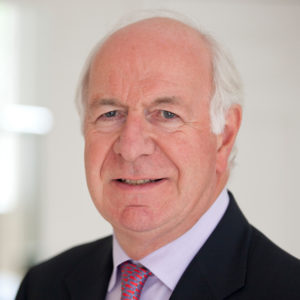medwireNews: A study of children and adolescents with classic 21-hydroxylase deficiency (21-OHD) has found no significant difference in outcomes when giving the highest hydrocortisone (HC) dose of the thrice-daily schedule in the morning or the evening.
“Given the variation in individual responses we recommend to individually optimize dose distribution and [monitor] disease control at multiple timepoints”, say Hedi Claahsen – van der Grinten (Radboud University Medical Center, Nijmegen, the Netherlands) and co-workers.
The researchers explain that one treatment strategy is to give the highest HC dose in the morning (eg, splitting dose 50%, 25% and 25%) to mimic the physiological circadian cortisol rhythm, but that some clinicians favour giving the highest dose in the evening (eg, 25%, 25%, 50%), optimising inhibition of androgen during its peak level, albeit with a possible risk of sleep disruption or nocturnal hypertension.
To investigate further, the team recruited 22 boys and 17 girls with 21-OHD, who were aged 4–19 years old (median 12 years), to participate in a 6-week crossover study.
As reported in The Journal of Clinical Endocrinology & Metabolism, the patients started the study following their usual treatment schedule, with 21 taking their highest dose in the morning and 18 their highest dose in the evening. After 3 weeks, the patients’ dose distributions were switched to the opposite weighting.
When the highest dose was in the morning, the median dose distribution was 48% morning, 25% afternoon and 29% evening.
In the last 2 days of each treatment block, the researchers measured the participants’ salivary 17-hydroxyprogesterone (17-OHP) and androstenedione (A4) levels at 05:00, 07:00, 15:00 and 23:00.
One patient received four daily doses of HC at 07:00, 13:00, 18:00 and 23:00 and their evening steroid hormone levels were not included in the analysis.
Claahsen – van der Grinten et al report that, when data from the four measurement times were collated, there was no significant difference between average 17-OHP and A4 levels during the high-morning and high-evening dose schedules.
However, further analysis indicated that “the effect of treatment regimen differed between timepoints” so that a high-evening dose was associated with significantly lower 17-OHP levels than the high-morning dose, as well as a trend towards lower early morning levels of A4.
And a high-morning dose was associated with significantly lower 17-OHP and A4 levels in the afternoon than the high-evening dose.
“Despite the early morning 17OHP suppression with the high evening dose regimen, the suppressive effect was no longer observed in the morning (~7.00 am), stressing the importance of giving the evening dose as late as possible and the morning dose as early as possible”, observe Claahsen – van der Grinten and co-authors.
Furthermore, they note that there was “high” variability in 17-OHP and A4 levels between the patients and this was not significantly associated with sex, Tanner stage, disease control before and during the study, total HC dose, or the differences in average 17-OHP and A4 levels throughout the study.
The researchers also assessed individual patient control of 17-OHP and A4 during the high-morning and high-evening treatment schedules. During the mornings of the high-morning treatment period, 19 patients had optimal treatment, four were overtreated and 16 were undertreated, while the corresponding patient numbers during high-evening doses were 18, three and 15.
The patients had a circadian rhythm of both hormone levels, peaking in the morning and falling significantly over the two later timepoints, and this was true whether the highest HC dose was given in the morning or evening. However, the investigators say this effect was “less pronounced” during the high-evening dose regimen, where there was no significant difference in A4 morning and afternoon levels.
In addition, patient sleep scores and average activity scores during the study did not significantly differ between the two dose regimens. And when ambulatory overnight blood pressure monitoring data in the last week of each regimen was assessed for 26 patients, there was no significant difference in the average overnight diastolic or systolic blood pressures between the two dose schedules.
The researchers therefore write that “no clear benefit for either treatment schedule was established” but that “individual patients may benefit from one or the other dosing strategy”.
They conclude that if hormone level monitoring suggests “indistinguishable total androgen exposure” for the two treatment schedules, “it can be argued that a physiological pattern of HC intake is preferable.”
By Lynda Williams
medwireNews is an independent medical news service provided by Springer Healthcare Ltd. © 2021 Springer Healthcare Ltd, part of the Springer Nature Group


